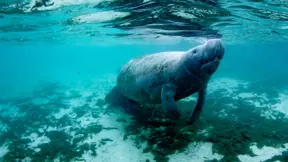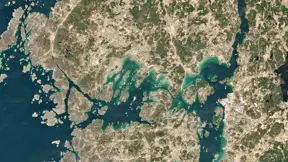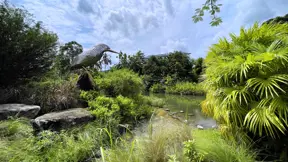
Reduced uncertainty about the dynamic distribution of marine species
Helping DNV GL improve environmental risk assessments of oil spills on seabirds and marine mammals
DNV GL performs environmental risk assessment of oil spills to ensure that Oil and Gas activities in the Arctic do not adversely impact vulnerable seabirds and marine mammals. By using the Marine Animal Movement Portal (MAMP) that revolutionises risk assessments of oil spills, DNV GL is creating a better understanding of and reducing the uncertainty of the environmental studies. This can lead to swifter permitting while simultaneously protecting marine life.
Challenge
To carry out the environmental risk assessments, DNV GL needs to know the distribution of sensitive seabirds and marine mammals to accurately describe the effects of potential oil spills on these animals. In the Barents Sea, this information is not readily available for animals that are free ranging, such as seabirds and marine mammals. This uncertainty provides a challenge for risk assessments for permitting purposes.
Solution
Providing cutting-edge spatial models to reduce uncertainty
To help DNV GL improve the accuracy of risk assessments, DHI set up the Marine Animal Movement Portal (MAMP) describing movements of seabirds and marine mammals. MAMP provides easy, online access to cutting-edge data about the presence and movements of six species of seabirds and four species of marine mammals that are identified as vulnerable according to the classification of the Norwegian regulators. MAMP combines advanced dynamic habitat- and agent-based modelling that allows for an analysis of the movements of the animals.
With the MAMP data, DNV GL could assess the effects of potential oil spills based on simultaneous real-time simulations of the marine life and the stressor. With this information, DNV GL created a better understanding of potential consequences in time and space and improved the accuracy of environmental risk studies.
Results
- Significant improvement of environmental risk assessments for seabirds and marine mammals in the Barents Sea
- Reduced uncertainty and increased understanding of the risk picture of O&G activities, thereby improving the planning of risk-reducing measures
- A state-of-the-art method supporting permitting processes for O&G activities and improved protection of vulnerable marine life
Client:
Location:
The Barents Sea
Related SDG(s):
SDG 14: Conserve and sustainably use the oceans, seas and marine resources for sustainable development
Technology:
‘The use of dynamic modelling data like MAMP is the next step in oil spill risk assessments as it allows us to examine the impact in detail in a dynamic and changing environment like the Barents Sea. In such dynamic systems, average distribution data is not sufficient to capture the true risk. Improving the risk picture with the simultaneous modelling of fate and dispersion of oil , movements of sensitive animal populations and drifting ice, allows for increased understanding and improved planning of risk reducing measures.’
Odd Willy Brude, Senior Principal Consultant
DNV GL – Energy Systems
About our client
DNV GL is the world’s leading classification society and a recognised advisor for the maritime industry and the technical advisor to the oil and gas industry delivering world-renowned testing, certification and advisory services to the energy value chain. As a trusted international certification body, DNV GL helps businesses assure the performance of their organisations, products, people, facilities and supply chains.
You may also like
How can we help?
With our global network of offices, we make sure you get the right answers to your local needs. Tell us about your water challenges and we will get back to you.


